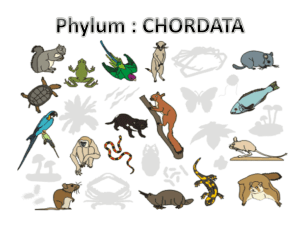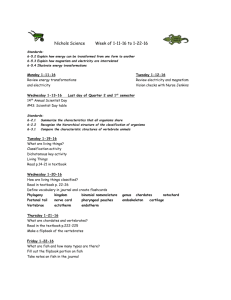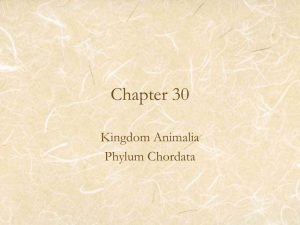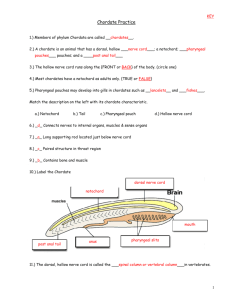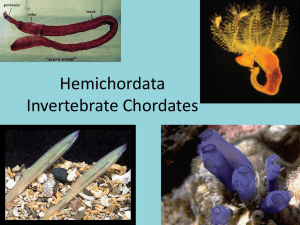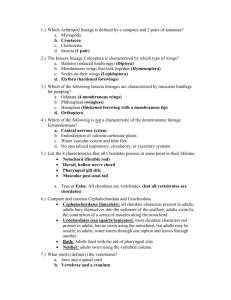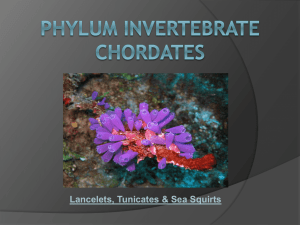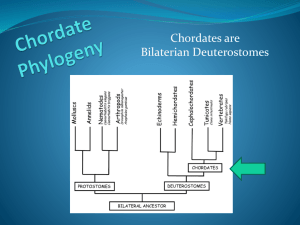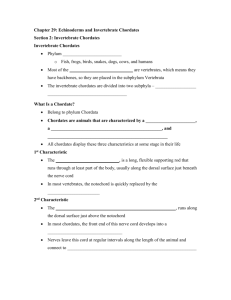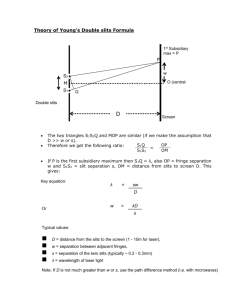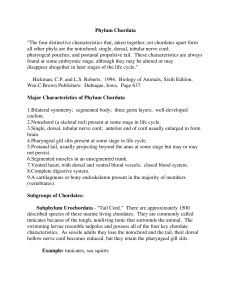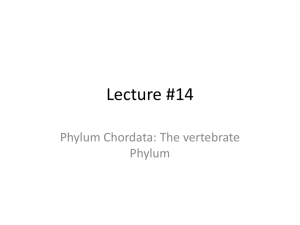Chordates
advertisement
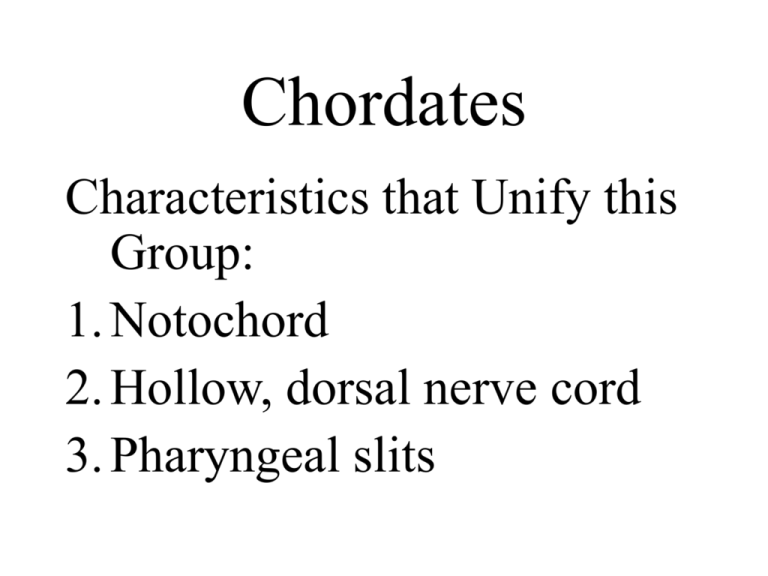
Chordates Characteristics that Unify this Group: 1. Notochord 2. Hollow, dorsal nerve cord 3. Pharyngeal slits Chordate Characteristics Notochords • Long, flexible support rod • Dorsal, just below nerve cord • Usually replaced by backbone in early development Hollow, Dorsal Nerve Cord • Just below the notochord • Front end develops into the brain • Many nerves branch to rest of body from this main cord Comparison of Arthropods and Vertebrates Pharyngeal Slits • In aquatic chordates, these develop into gill slits • Only chordates have pharyngeal gill slits Pharyngeal Slits • In terrestrial chordates the pharyngeal slits close up at an early stage in development • In humans, the embryo doesn’t ever develop actual slits, but does develop pharyngeal “pouches” Invertebrate Chordates – Tunicates and Lancelets Invertebrate Chordates – Tunicates Tunicates – Larvae and Adult Tunicates - larva • Tadpole-shaped larvae are free swimming. • Only the larvae have the notochord and dorsal nerve cord • They Filter plankton and breathe through their pharyngeal gill slits Tunicates - adults • Adults develop through metamorphosis of larval stage • Are sessile, filter feed and breathe through the gill slits Lancelets • Fish-like shape • Half (at least) of their body is buried in the sand • Filter-feeders • Have mouth and up to 100 pharyngeal slits along body Lancelets • Have muscle/nerve arrangement similar to that found in ALL vertebrates • No jaw • No appendages
